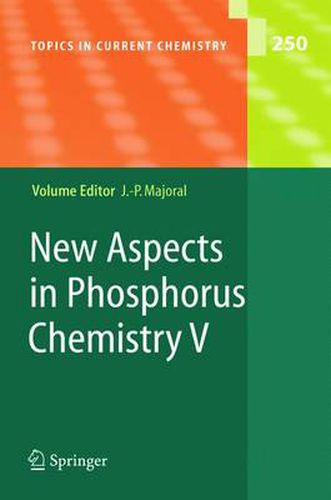Readings Newsletter
Become a Readings Member to make your shopping experience even easier.
Sign in or sign up for free!
You’re not far away from qualifying for FREE standard shipping within Australia
You’ve qualified for FREE standard shipping within Australia
The cart is loading…






Undoubtedly the chemistry of phosphorus appears more and more attractive in the sense that phosphorus presents an extraordinary versatile behaviour that allows the synthesis of a large number of different phosphorus reagents usable for applications in different fields, from biology to material science without f- getting key applications in catalysis. The full maturity of this topic of research can be explained by all the acquired knowledge over these twenty last years. Organic and inorganic chemistries of P , P and P species have been the s- in ]V v ject of thousands of publications while the chemistry of low coordinated ph- phorus derivatives experienced its hour of glory from the 1970s to the early 1990s. In parallel, interactions between phosphorus compounds and transition metals afforded many complexes, a lot of which present fascinating properties as catalysts. The interest in all these themes really is not decreasing, indeed some fas- nating areas of research are emerging or are the subject of many investigations: the medicinal chemistry of bisphosphonates, the role of phosphorus in biology, phosphorus ligands in radiopharmaceutical chemistry, phosphorus in material science, new polymers and dendrimers incorporating phosphorus, and as- metric catalysis to name but a few. Indeed researchers, benefitting from their background in basic phosphorus chemistry are developing many new fields of research.
$9.00 standard shipping within Australia
FREE standard shipping within Australia for orders over $100.00
Express & International shipping calculated at checkout
Undoubtedly the chemistry of phosphorus appears more and more attractive in the sense that phosphorus presents an extraordinary versatile behaviour that allows the synthesis of a large number of different phosphorus reagents usable for applications in different fields, from biology to material science without f- getting key applications in catalysis. The full maturity of this topic of research can be explained by all the acquired knowledge over these twenty last years. Organic and inorganic chemistries of P , P and P species have been the s- in ]V v ject of thousands of publications while the chemistry of low coordinated ph- phorus derivatives experienced its hour of glory from the 1970s to the early 1990s. In parallel, interactions between phosphorus compounds and transition metals afforded many complexes, a lot of which present fascinating properties as catalysts. The interest in all these themes really is not decreasing, indeed some fas- nating areas of research are emerging or are the subject of many investigations: the medicinal chemistry of bisphosphonates, the role of phosphorus in biology, phosphorus ligands in radiopharmaceutical chemistry, phosphorus in material science, new polymers and dendrimers incorporating phosphorus, and as- metric catalysis to name but a few. Indeed researchers, benefitting from their background in basic phosphorus chemistry are developing many new fields of research.